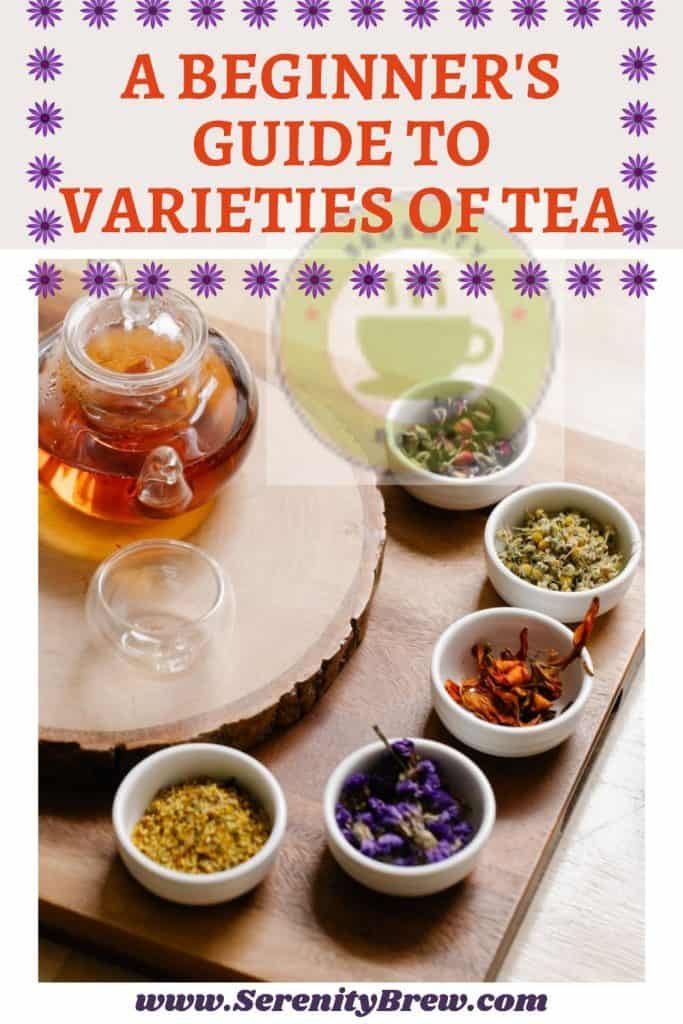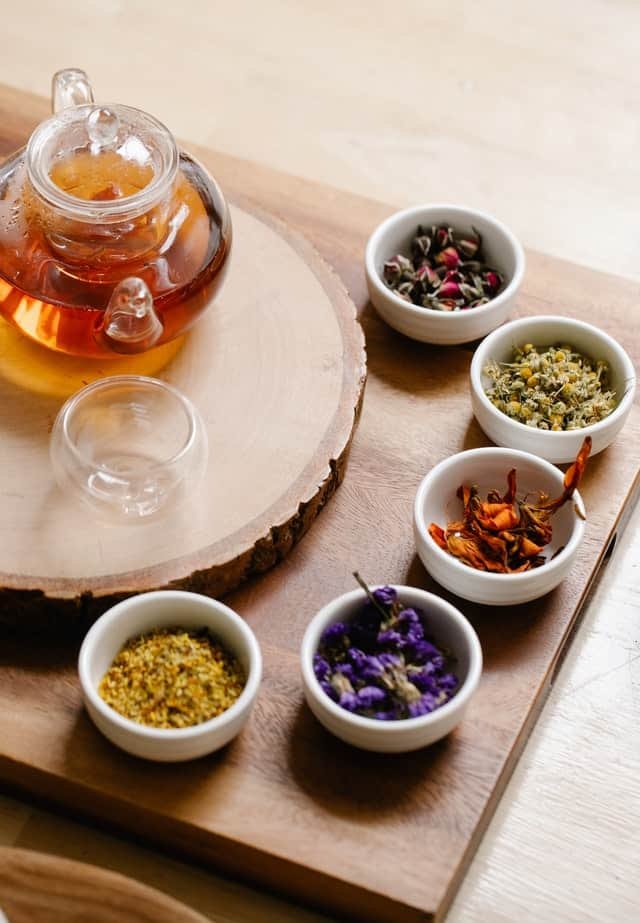
The richness of the world of teas is impressive.
All types of tea are made from the same plant, Camellia sinensis. However, the climate, the composition of the cultivation land, the varieties and parts of the plant used and, above all, the production methods used by tea artisans allow totally different results to be achieved.
White tea
What distinguishes a white tea:
White tea is distinguished by a simple and minimalist production process. It is considered the least processed tea of all the existing tea varieties, since it is only collected and dried.
To make white tea, only the choicest buds of the tea plant are used. The quality of the raw material added to this production method keeps the essence of the plant alive and respects the nature of its flavors to the maximum.
You will like it if:
- You prefer mild flavors.
- You have some experience in the world of teas. Appreciating the subtleties of a good white tea requires a relatively trained palate.
- You are willing to pay a relatively high price.
Famous White Teas:
- Silver Needle: It is one of the best white teas that can be found. It appears in the list of the 10 great Chinese teas.
- White Peony, with a more intense flavor and excellent value for money.
Curiosities:
- For white tea, especially large buds are needed. These often come from La Da Bai, the Great White, a tea plant characterized by the size of its leaves.
- These tender shoots are covered with small vegetable hairs when they are harvested. In higher quality tea brews, they can often be seen floating on the surface.
Yellow tea
What distinguishes a yellow tea:
Yellow tea is a rare variety of tea. It is produced in China and its production process is complicated and laborious.
All yellow teas go through the Meng Huang phase during their preparation. During this, the tea oxidizes very slowly wrapped in paper or cloth packets that are moistened with steam. This process softens the flavor of the tea and dyes it its characteristic yellow color.
You will like it if:
- You like light flavors in tea. Yellow tea is often compared to green teas, but with less vegetal flavors.
- You are a green tea lover and you want to give it a twist. Yellow tea is softer on the palate and less astringent. Yellow tea can be quite a find.
- You are familiar enough with the world of teas to appreciate the nuances of a smooth but different tea.
- You are willing to pay a relatively high price.
Famous yellow teas:
- Junshan Yinzhen: A tea that features in the list of Famous Chinese Teas and one of Mao Zedong’s favorites.
- Huoshan Huangya: A yellow tea with flavor notes reminiscent of chestnuts.
Curiosities:
- Most yellow teas are hard to find outside of China.
- Few yellow tea growers remain and many of the traditional brewing methods have been lost.
- Yellow tea is considered a low oxidation tea, and is often compared to white and green teas.
Oolong tea
What distinguishes an oolong tea:
Oolong is very popular in China. It is a partially oxidized tea, this means that the degree of oxidation of an oolong is lower than in a black tea but higher than in a green tea.
Each variety of oolong tea is unique. The degree of oxidation can change a lot and totally determines the characteristics of the tea. Leaves that go through a short process tend to sweet and floral flavors. Those that oxidize longer generate more intense flavors with earthy and woody notes. Lightly oxidized teas are lighter in body, while heavily oxidized teas are heavier.
Oolongs are authentic signature teas: their appearance, shape, degree of oxidation and the changes that this entails in their flavor vary tremendously depending on the production area and the tea master behind their elaboration.
You will like it if:
- Oolong offers a world of different teas to discover. If you are already familiar with the most common teas and are able to appreciate their nuances, oolong will be a great discovery.
- Oolong probably shatters what you thought you knew about teas. In them you can find intermediate flavors between what is considered a typical green tea and a black one.
Famous oolong teas:
- Da Hong Pao: a highly appreciated and quite expensive tea. It is an oolong with a fairly long oxidation process, which produces toasted aromas that coexist with floral ones.
- Tieguanyin: An oolong closer to green teas. It has a herbaceous flavor reminiscent of hay, smooth and fresh on the palate.
- Jinxuan: it is called milk oolong because of the strange texture of its infusion, which has a certain creaminess.
Curiosities:
- China and Taiwan dispute being the birthplace of oolong, but today countries like India, Sri Lanka, Japan and New Zealand produce good oolongs.
- It is said that Oolong comes from wu long, black dragon in Chinese, and that this name refers to the twisted and curled shape of the leaves of this tea.
Green Tea
What distinguishes a green tea:
Green is one of the best known and most consumed types of tea in the world. The main difference between green tea and other varieties is its low degree of oxidation. After harvesting, there is a brief oxidation phase that is stopped by roasting the tea in a wok or by steaming.
It is customary to divide them between Japanese and Chinese teas. The Japanese make it using steam, while the Chinese roast it using a wok. In Japanese teas, vegetable notes stand out, while Chinese teas are more delicate and floral.
You will like it if:
- You are looking for a tea with herbaceous, fruity or floral flavors.
- You prefer lighter bodied, less dense and refreshing teas.
- You are looking for a drink to accompany a meal. The flavors of green tea and the light body of its infusion are ideal for cleaning the mouth without being cloying. In many Asian countries it is customary to drink green tea during any meal.
Famous Green Teas:
Famous Japanese Green Teas
- Matcha. One of the most famous Japanese green teas. It is made by grinding the tea leaves, which are consumed with the infusion, and stands out for its bright green color.
- Sencha, the daily tea. They serve it in bars, restaurants and cafes to accompany any situation. The Japanese drink it cold in summer and hot in winter.
- Genmaicha: a combination of green tea with roasted rice.
Famous Chinese Green Teas
- Longjing: with a quite vegetable flavor with hints of nuts. It is a very representative tea of what a Chinese green tea would be.
- Biluochun: a green tea that stands out for its floral fragrance and mild flavor. Highly regarded in China.
- Gunpowder: the classic green tea that resembles pellets and that in some Maghreb countries they combine with mint to prepare Moorish tea.
Curiosities:
- Green tea is believed to have originated in China. Buddhist monks spread its consumption and brought it to Japan.
Black tea
What distinguishes a black tea:
The key to black tea is the oxidation process that the tea leaves go through to make it. This is longer than in other varieties of tea and is responsible for the intense flavors that characterize this type of tea.
By the way, in the West we usually call black tea what several Asian countries call red tea.
You will like it if:
- You prefer intense flavors. Black teas usually offer marked flavors and full-bodied infusions.
- You are looking for an infusion to wake you up. The content of black teas in caffeine is considered to be higher than in other varieties, although there is some debate on the subject.
- You want to accompany a meal. The intense flavor of black tea supports combinations with foods with marked tastes. Black tea is ideal for lowering a dessert.
Famous black teas:
The family of black teas is numerous and very varied. In it, we can find roasted, malted, chocolate flavors and also fruity and floral.
Famous indian teas
- Darjeeling: Some call it Muscat tea because of its fruity aromas. It has a less forceful body than other black teas.
- Assam: A “classic” black tea, famous for its intense, malty flavor.
Famous chinese teas
- Dianhong: A delicate black tea, offering sweet aromas and a delicate infusion with little astringency.
- Keemun – Malty flavors reminiscent of cocoa can be found in this tea. Its infusion is light-bodied
- Lapsang Souchong: a very particular tea. It is made by smoking black tea over pine fires. Intense and surprising.
Famous blends with black tea
- Earl Grey: Probably one of the most iconic English teas. It is made by flavoring black tea with bergamot, a citrus fruit grown in Italy.
- Chai tea: black tea holds everything. In this case, it is the base to which spices such as cloves, cardamom and cinnamon are added. The Indians invented this mixture. They say that seeking to enhance the flavor of the tea, which seemed tasteless to them.
Curiosities:
- Black tea was the first to be exported from ancient China because its oxidation made it more durable and less delicate than its green cousin.
- The Dutch were the first to bring tea to Europe in the 17th century. S immediately popularized throughout the continent, especially in England.
Red tea

This is how pu-erh is known in the West, a Chinese tea with a peculiar way of making it. Remember that in Chinese, Korean, Japanese and many other Asian languages, what we in the West call black tea is called red tea.
What distinguishes a red tea:
There are two different factors that define what is authentic pu-erh. On the one hand, the cultivation of red tea is limited to very specific areas and governed by strict regulations. If you think about the world of wine, the cultivation and elaboration of red tea could be assimilated to what would be a denomination of origin.
On the other hand, during its preparation, red tea goes through a rather unique process: fermentation. Pu’er is one of the unique and rare varieties of fermented teas that exist.
You will like it if:
- You look for unusual flavors in teas and are able to appreciate their complexity. The fermentation create a whole new range of flavors and aromas in the pu-erh. They are often described as earthy.
Famous red teas:
Relatively recently, the Chinese government created a kind of appellation of origin for pu-erh. This means that the name pu-erh can only be used to refer to teas produced in very specific places in Yunnan province.
We can classify the pu-erh into two different categories.
- Raw pu-erh: with a more powerful, refreshing flavor and with a certain bitterness.
- Matured pu-erh: soft, earthy taste with a denser body.
